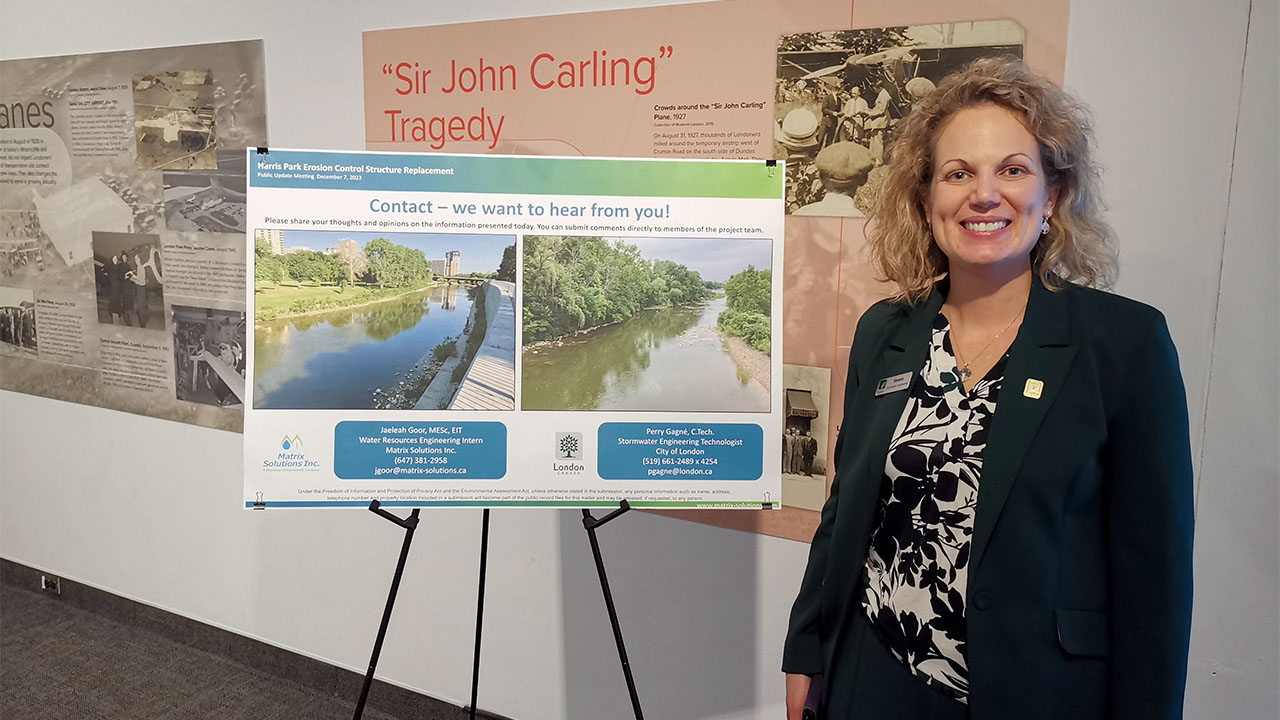City of London unveils ambitious restoration plan for Harris Park
 CREDIT: MAURICIO PRADO
CREDIT: MAURICIO PRADODivision Manager for the City of London, Shawna Chambers (pictured), said the project’s objective is to have a better erosion control structure on the east bank of the Thames River.
Beginning in July, The City of London plans to start a restoration of Harris Park. The project is anticipated to be completed by December. The objective is to have better erosion control structure on the east bank of the Thames River, north of the Forks of the Thames.
“It’s essentially rehabilitating a bank that was failing, as well as making some park improvements to allow for people to interact more with the river,” said the Division Manager for the City of London, Shawna Chambers.
Chambers said the project includes a lookout over the river, an enhanced fishing platform, and a boat launch for non-motorized boats. The project started with replacing the current infrastructure with suitable options that preserve the shoreline, improve park operations, and keep the river’s natural heritage.
“The thought process of this project was effectively that the gaping baskets, which are these steel grates filled with rocks, were starting to fail,” Chambers said. “So that triggered us to say, ‘Well, we do not want to lose the bank of the park, we do not want the rocks to fall into the river.’”
She said they will prioritize using a natural design process to replace these engineered structures with more naturalized bank protection. The current city-owned building extends roughly 700 metres from the Queen St. Bridge to the Blackfriars Bridge.
“This issue was identified in 2021 with the City’s Erosion Control Structures Condition Update Study, which highlighted Harris Park as a high priority for replacement,” Chambers said. “The park itself was deteriorating.”
The job includes clearing the riverbed of accumulated stone, vegetation, and debris, removing the decaying stone gabion baskets and installing a strengthened vegetated revetment to preserve the aquatic and riparian ecosystems.
“Harris Park is one of our city’s most heavily used parks. We are planning our construction around two major festivals, Rock the Park and a great comedy festival,” Chambers said.
This project will also improve commuting for people along the Thames Valley Parkway.
“If they are heading to the Fanshawe campus downtown, they will have a nice new pathway through Harris Park,” Chambers said.
She stated that the City is trying to achieve a “nice interface” so the public can enjoy the riverbank more at the park location. They also plan to create more habitat for animals in the area where they are going to be replacing the sod with more of a meadow environment.
“We do not want the bank to fail, so we want the riverbank to be sustained and solid,” Chambers said. “The other objective is to improve people’s experience with a safer environment that does not prompt any erosion when they are in Harris Park with the river.”
She added that they lacked enough media coverage to spread the information. The last public discussion on the improvements to Harris Park was conducted on Dec. 2023 at Museum London.
She said that the project will create updated and naturalized bank protection so it does not need to be rehabilitated in the future.
“It creates a more enhanced park for the city to experience,” Chambers said.
















